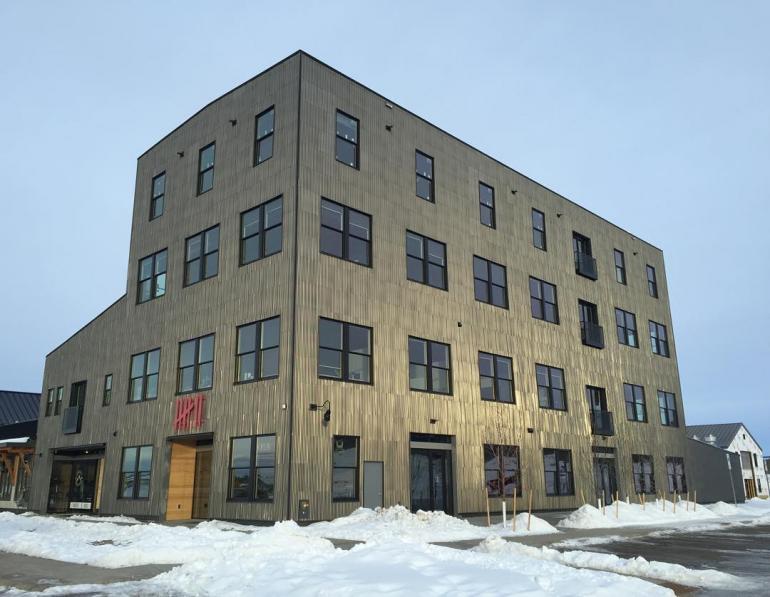Good Development
Perhaps there is such a thing.
Over a beer a few years ago, developers Scott Dehlendorf and Barry Brown proposed a challenge to themselves: to create an adaptive reuse, mixed-use development from the dilapidated historic buildings near Oak and Rouse in northeast Bozeman. This hip new development would revitalize only turn-of-the-century railroad buildings and granary structures, but also old-fashioned Bozeman values: family, heritage, respect for the land, and of course, a picturesque view of the Bridgers.
Three years later, Dehlendorf and Brown call themselves Montana Avenue Partners, housing their own trendy industrial-style office on the development, which now includes bustling businesses like the Daily Coffee Bar, Lone Mountain Gym, and Montana Trading Company.
All the buildings are original to the property: for instance, in the 1920s, the Daily was a barn, while Lone Mountain Gym was built from a pigeon-infested steel sorting building (inside, note the original steel crane installed as a roof beam, a nod to the building’s past). Future plans include incorporating the iconic granary (circa 1919) into an office building; a retail space below the granary will allow customers to look up into the historic tanks.
“It would have been cheaper to just scrap everything and start fresh,” admits Dehlendorf. “But if you take a 100-year old building and reengineer it with modern technology, it’ll be here for another 100 years. You’ve given a run-down historic area a new lease on life.”
Part of the project means conservation: it’s an adaptive-reuse project, which means conserving raw land by building on existing developed land as well as keeping the project environmentally friendly. “We challenged our architects, engineers, and builders to incorporate as many LEED standards as we could afford,” says Dehlendorf, “We salvaged timbers for framing, kept the interior roof [of the Daily building], recycled all the tin to create the exteriors. Even our desks in our office and the benches outside are built from leftover site materials.”
Outside the eco-friendly buildings, the developers landscaped with drought-tolerant, native plants. Seventy plus trees are already growing for future shade on the development. Small touches like rain gutters that redirect water straight to the aquifer, bypassing parking lot grease and oil, and “kalwall” lighting—semi-opaque skylights that minimize the need for electric lighting—make even the project’s small details thoughtfully green.
The buildings’ architecture uphold Dehlendorf and Brown’s green standards, but their residents uphold their values. “We look for synergistic businesses that complement our project—literally hundreds of interested parties have applied, but we review each one to make sure we all have similar motivations, such as family,” says Dehlendorf.
So far, this has resulted in an influx of local business owners, whom the developers now greet as friends on a first-name basis. Treehouse kids (now closed) featured all wood toys and a chemically safe environment for kids under six, Lone Mountain Gym keeps 1,200 families a week entertained with a huge gymnastics facility and pool, and the Natural Baby Store features organic clothes and BPA-safe bottles for eco-babies.
Andy Epple, city planning director for the city of Bozeman, calls the Oak/Rouse mixed-use development “a terrific project—it’s the poster child of good, smart growth and infill development. It embodies a lot of adaptive reuse of historic buildings, has a good location, and an interesting mix of uses. We think it’s really going to serve as an anchor to the burgeoning northeast neighborhood of Bozeman—we’re very happy and excited about it.”






